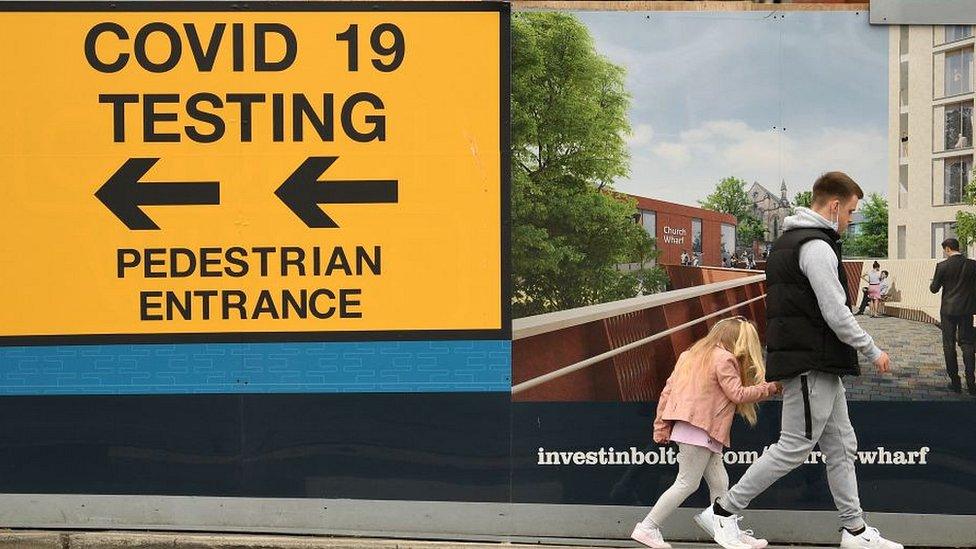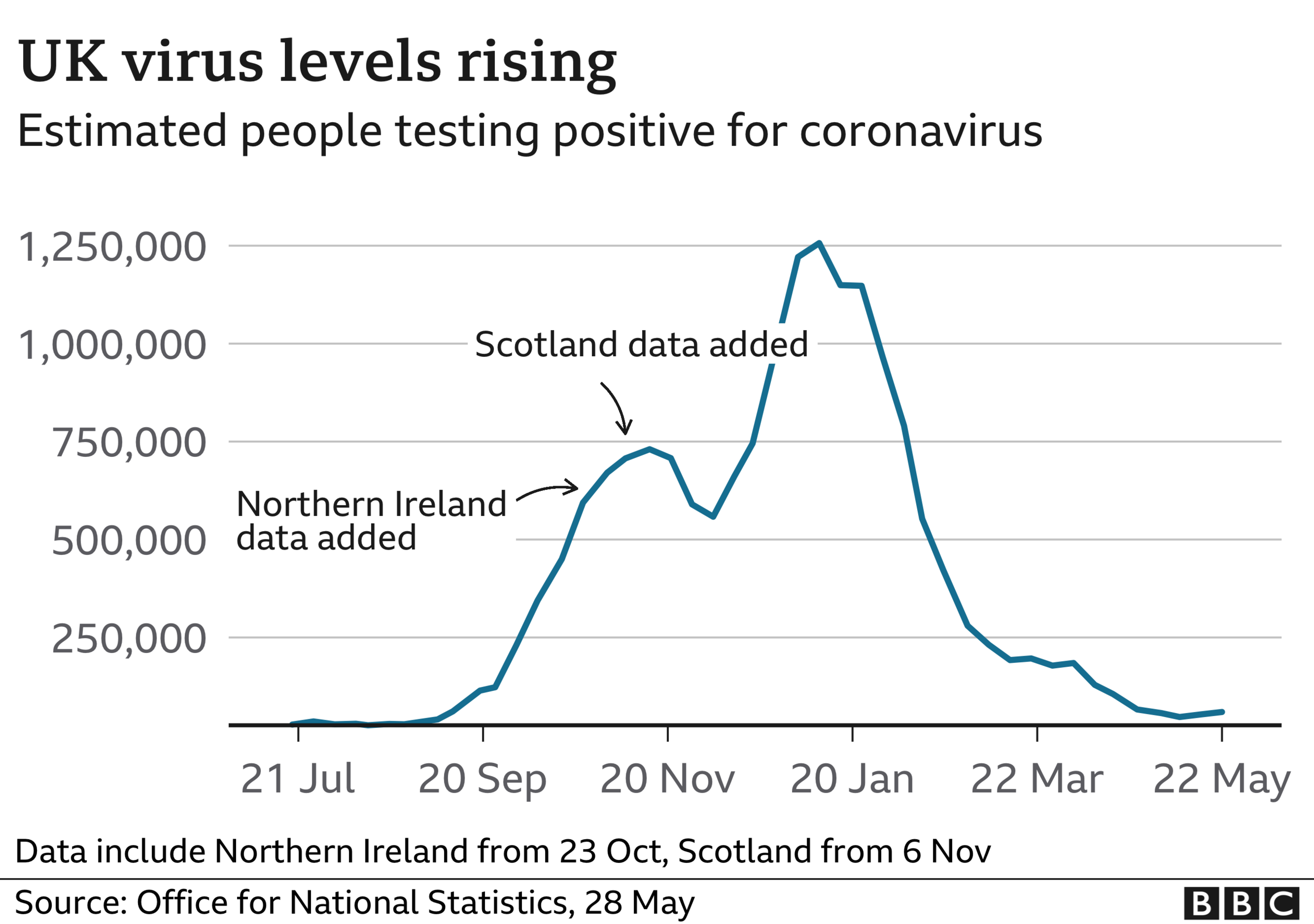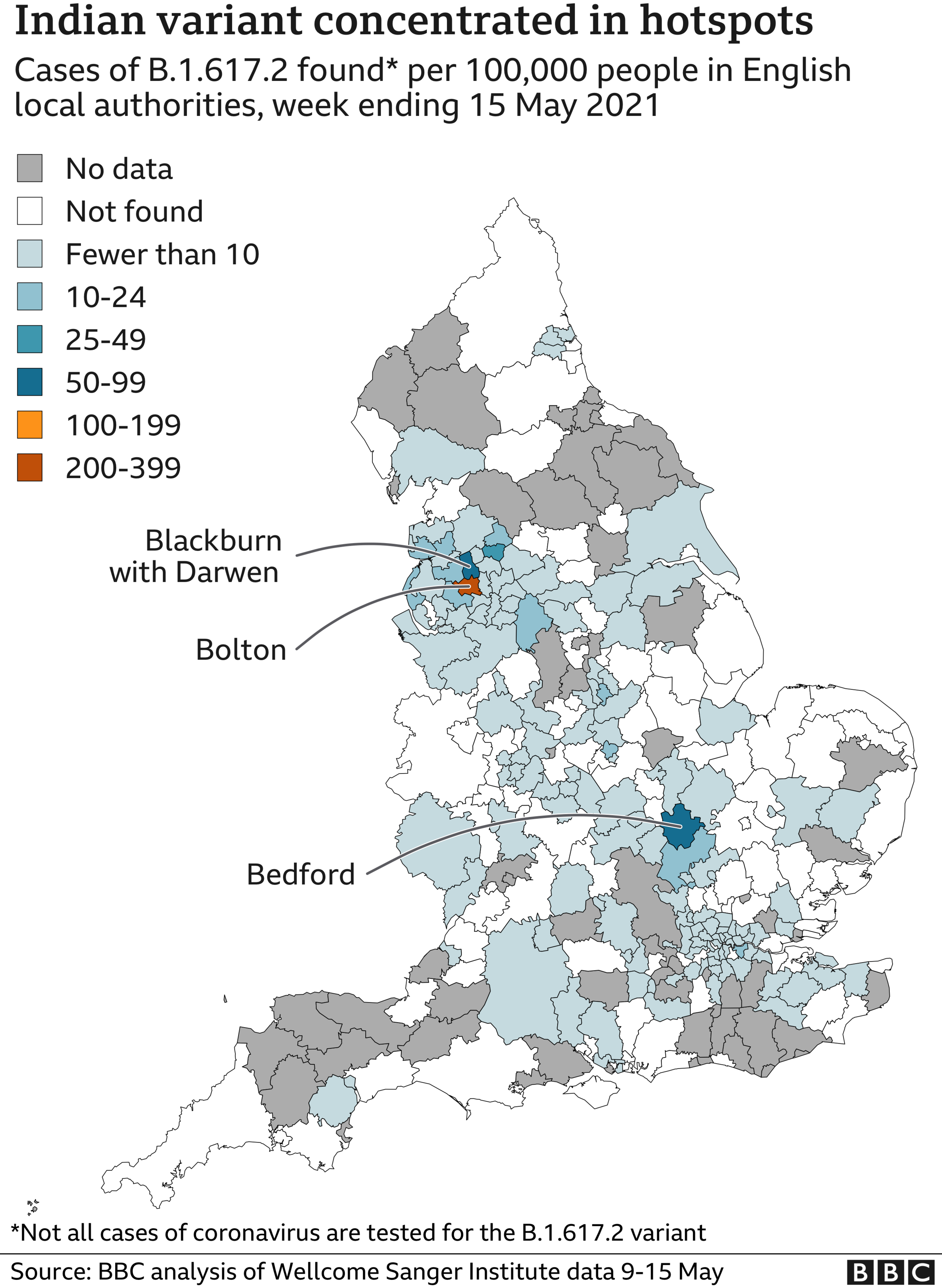Indian variant: Covid cases low but creeping up
- Published

Coronavirus cases in the UK remain low, but there are signs of a small increase, Office for National Statistics (ONS) figures suggest.
The ONS regularly swabs a random sample of the population to estimate levels of the virus, even in people who don't have symptoms or don't get tested.
Almost half of the infections picked up look like they are probably caused by the variant first identified in India.
But national data suggests it is still confined to a handful of areas.
An estimated 60,000 people in the UK were infected with coronavirus in the week leading up to 22 May, an increase of roughly 10% from 54,000 people the previous week.
That equates to 0.09% of the population - or one in 1,080 people.
On Friday national data showed 4,182 people had tested positive for Covid, 134 were admitted to hospital and 10 died.
So there is still not a lot of Covid around compared with the winter peak.
But there have been signs of increases in England, Scotland and Northern Ireland in the previous fortnight. In Wales, cases remain stable.

So far, this rise across the UK is small - but data suggests there are larger rises concentrated in just a few local authorities.
The ONS data is not broken down by local authority, since they don't swab enough people in each area to give accurate estimates. So it's good for spotting national trends, but less good at picking up local variation.
While the overall increases are small, this hides big spikes in areas with lots of cases of the Indian variant, including Bolton, Blackburn and Bedford.

These national figures might partly be skewed by surge testing in areas of concern, which then picks up more cases.
Public Health England and ONS data suggest roughly 40-50% of new cases were the B.1.617.2 variant found in India as of the last week in May.

The difference this time - compared with previous waves - is the vaccine, which should be breaking the link between infection and illness.
After two doses, the jabs are roughly as effective against the India variant as they are against the Kent variant.
In Bolton - which has the highest case numbers in the UK - the vast majority of hospital patients are not fully vaccinated and most cases are in people who are not, or who only just became eligible to have the jab.
Nationally, the number of patients in hospital has continued falling.
But in the North West, which is particularly affected by the B.1.617.2 variant, hospital admissions are starting to go up.

Since cases in the UK as a whole have only just started to creep up, there may be a bigger rise in admissions to follow - there is always a lag before an infection translates to an illness which is severe enough to send someone to hospital.
That's why a five-week gap was left between each step of easing lockdown restrictions, to give enough time for those effects to be fully seen.
With this recent rise in cases, the next week or two will be crucial in seeing whether and by how much it pushes up the numbers of hospital admissions and deaths.
These figures will be key factors when government ministers decide whether the 21 June relaxations can go ahead.
Graphics by Daniel Dunford and the Visual and Data Journalism Team